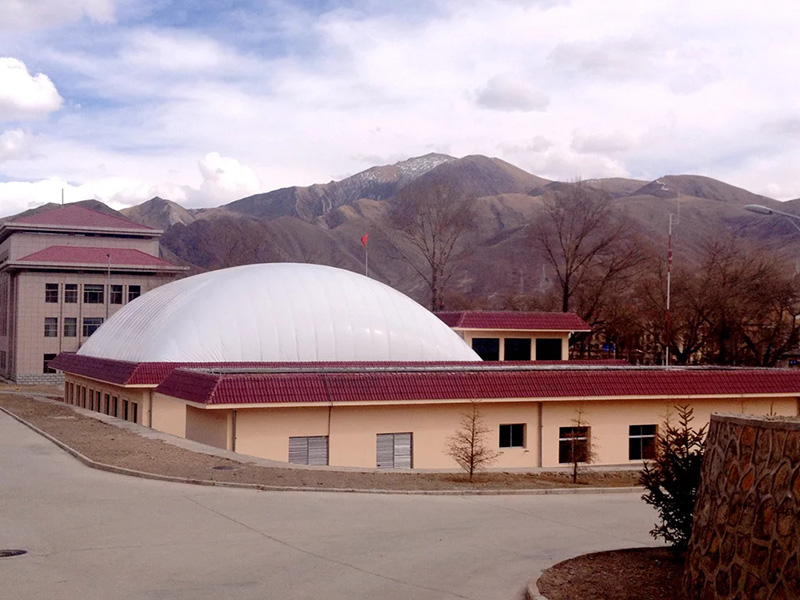The composition of the reverse hanging membrane in the sewage tank
Air domes, using pressurized air to form versatile enclosures, offer a modern solution in architectural design. These air-supported structures maintain shape through air pressure, providing a flexible alternative to traditional construction, especially in plateau areas where conventional methods are impractical. In such regions, air domes serve as efficient, adaptable spaces for uses like sports facilities and agricultural operations.

Difficulties in Plateau Areas
Challenges in Maintaining a Controllable and Comfortable Indoor Environment: The plateau region presents a considerable challenge in maintaining a comfortable indoor environment in buildings due to the vast temperature variations from morning to night. Conventional buildings may not provide enough insulation to withstand these fluctuations. With their adaptable and pressurized structures, air domes offer a potential solution by creating a controlled environment that can be efficiently regulated, ensuring comfort for occupants regardless of external weather conditions.
Difficultiesin Providing Adequate Oxygenation for Occupants: The elevated nature of plateau areas often results in lower oxygen levels, making it challenging to ensure proper oxygenation for indoor spaces. Conventional buildings may find it difficult to address this issue effectively. Air domes, however, can incorporate advanced ventilation systems that enable the efficient circulation and replenishment of oxygen. By utilizing pressurized air technology, these outdoor domes can overcome the difficulties associated with oxygenation, ensuring a healthier and more habitable indoor atmosphere.
Dry and Arid Conditions Leading to Low Humidity Levels: Plateau regions frequently experience dry conditions, leading to low humidity levels that can affect both human comfort and the functionality of indoor activities. Due to their capability to create a sealed and controlled environment, air domes provide an advantage in effectively managing humidity levels. Through careful regulation of air circulation and moisture content, air domes can mitigate the challenges posed by the arid climate of plateau areas, providing a more conducive environment for various purposes, including agriculture and human habitation.
Advantages of Air Domes in Plateau Areas
Cost Efficiency:Air domes offer a cost-effective solution in plateau areas, utilizing lightweight materials and a simplified construction process to reduce initial costs. Low maintenance requirements and energy-efficient design further enhance long-term economic advantages.
Energy Efficiency:In plateau regions with extreme temperature variations, air domes provide energy efficiency through their insulating inflatable structure, reducing the need for extensive heating or cooling. Their advanced ventilation systems also promote optimized air circulation, supporting sustainability.
Flexibility and Portability:Air domes, inherently flexible and portable, suit the dynamic landscapes of plateaus. They can be quickly erected, dismantled, and relocated to provide versatility for temporary events.
Durability and Longevity:Engineered with durable materials, air domes withstand harsh plateau conditions, including strong winds and heavy snow loads. Their longevity ensures a sustained return on investment, reducing the need for frequent replacements or extensive repairs.
Regulation of Air Circulation:Plateau challenges in maintaining optimal oxygen levels are addressed by air domes. Advanced ventilation systems enable precise air circulation and oxygen concentration regulation, ensuring a consistently comfortable and healthy indoor environment, making air domes suitable for various applications in plateau areas.
